I-Team: Hazardous Haze poses threat to Coachella Valley’s health and economy
Coachella Valley air quality has diminished dramatically since the end of August due to the impacts of Tropical Storm Hilary.
Local experts now say they are worried about the valley's wind-borne dust problem, which has intensified since the storm, and whether this could become a permanent hazard to our health and local economy.
Riverside County Supervisor Manuel Perez was at a January meeting of local city leaders discussing the environmental concerns that revolve around PM10 air pollution.
"PM stands for particulate matter, and it is 10 microns in diameter or smaller," said Perez while discussing our increasing dust storms post-Hilary. For comparison, that's one-seventh the thickness of a human hair. "Our lungs can't get rid of those tiny particles of PM10, and can be left scarred by them," Perez said.
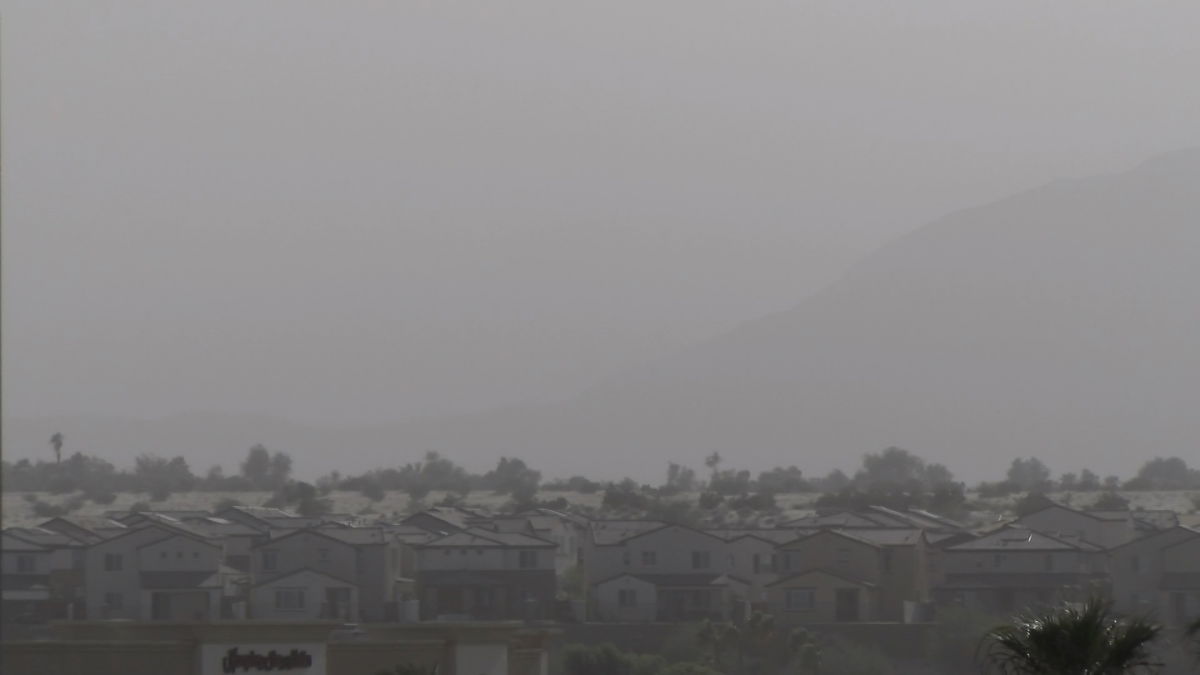
If these dust storms continue to obscure our skies into the springtime, traditionally the windiest months in the Coachella Valley, Perez and others say the haze they create could be a game changer.
"If this happens again in the spring, we're really in for it," said Tom Kirk of the Coachella Valley Association of Governments (CVAG). He points to hotels, tennis tournaments, music festivals, and other outdoor events people might simply opt not to attend.
"And if enough of us do that it could cripple our economy at one of the most important times of the year," Kirk said.
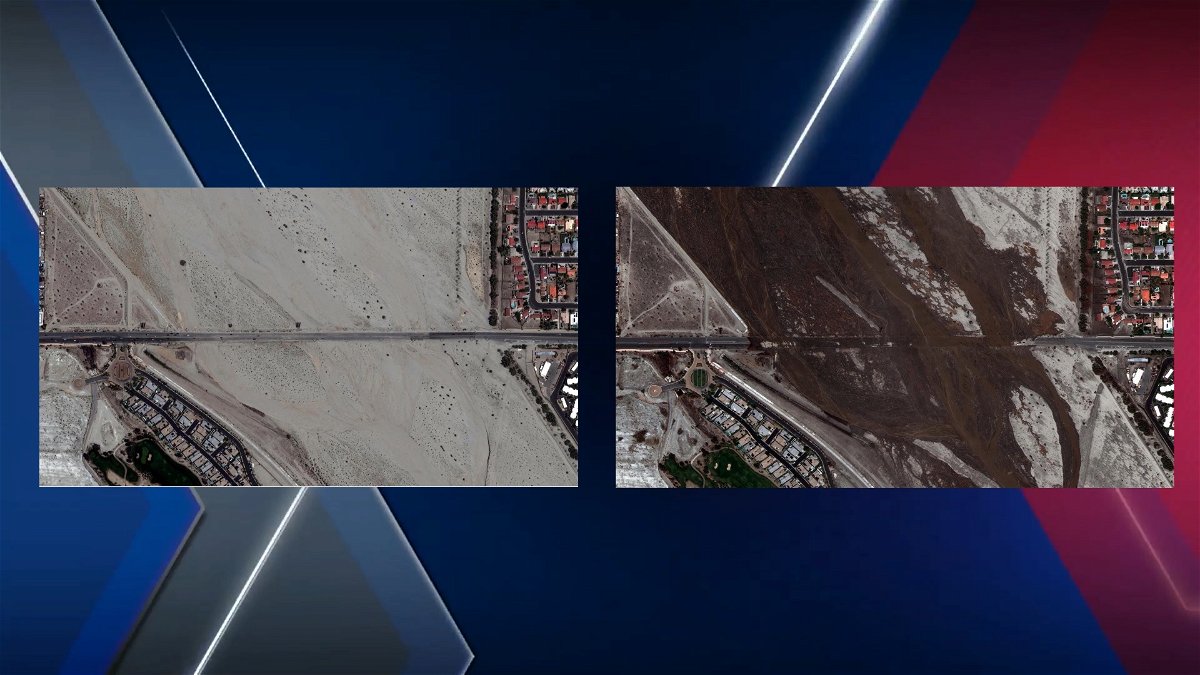
Before and after the Hilary aerial photos of Vista Chino Road through the Whitewater Wash show how much soil was disturbed there with fresh sediments and newly-exposed powdery clay soiled.
CVAG estimates more than 5,000 acres of muddy silty deposits have been exposed around the valley following Hilary, and if disturbed, the powdery dust is more easily blown by the winds, which increases our increased PM10 pollution levels.
The South Coast Air Quality Management District has had to modify its criteria for issuing its blown-dust air quality warnings downward from 25 miles per hour now to 12 miles per hour because of the increased dust being kicked up at lower wind speeds.
CVAG Environmental Consultant, Dr. Emily Nelson says the number of days the Coachella Valley has violated Federal Clean Air standards has also jumped, post Hilary.
Nelson said, "To have four actual events, four days in seven years is our traditional, and we had five in six weeks." She hopes it will not be a long-term problem, but points to peer-reviewed studies conducted here in the desert that show a direct link between high dust days and lung and heart troubles.

A 2000 study in the Journal of Exposure Science and Environmental Epidemiology built upon another Coachella Valley study 10 years earlier, showing increased ER visits, hospital admissions, and deaths on days when our PM10 dust levels were elevated.
When Jeff Stahl asked her if this was a current health hazard," Dr. Nelson replied, "It's real, it's proven."
Doctors say the dust can cause long-term damage to our lungs." Allergist and Immunologist with Eisenhower Health Dr. Vincent Devlin said, "Absolutely. Chronic exposure to particulate matter over long periods can absolutely cause harm to the tissue inside your lungs."
People suffer from bad air in several ways. "Patients with asthma. Patients with Chronic Obstructive Pulmonary Disease or COPD," Devlin said.
A recent air monitor reading of PM10 pollution registered 1,126 micrograms per cubic meter of air at 9:00 a.m. in Mecca, more than seven times the federal clean air limit of 150 micrograms per cubic meter of air averaged by hour, as local leaders met to discuss the public health threat.
See the SCAQMD Current Hourly Air Quality Index Map here.
Solutions are limited due to the desert always having a higher level of natural dust, but here's what's being done right now to reduce the excess.
Cities and other agencies are working to cover loose soils in low-lying wash areas with newly exposed sediment from August's flood waters. They're also working to remove piles of dry silt lining our impacted roadways and sweeping our regional roads clear of PM10 dust particles. Sweeping has been a long-term clean air strategy for CVAG to meet federal clean air standards.
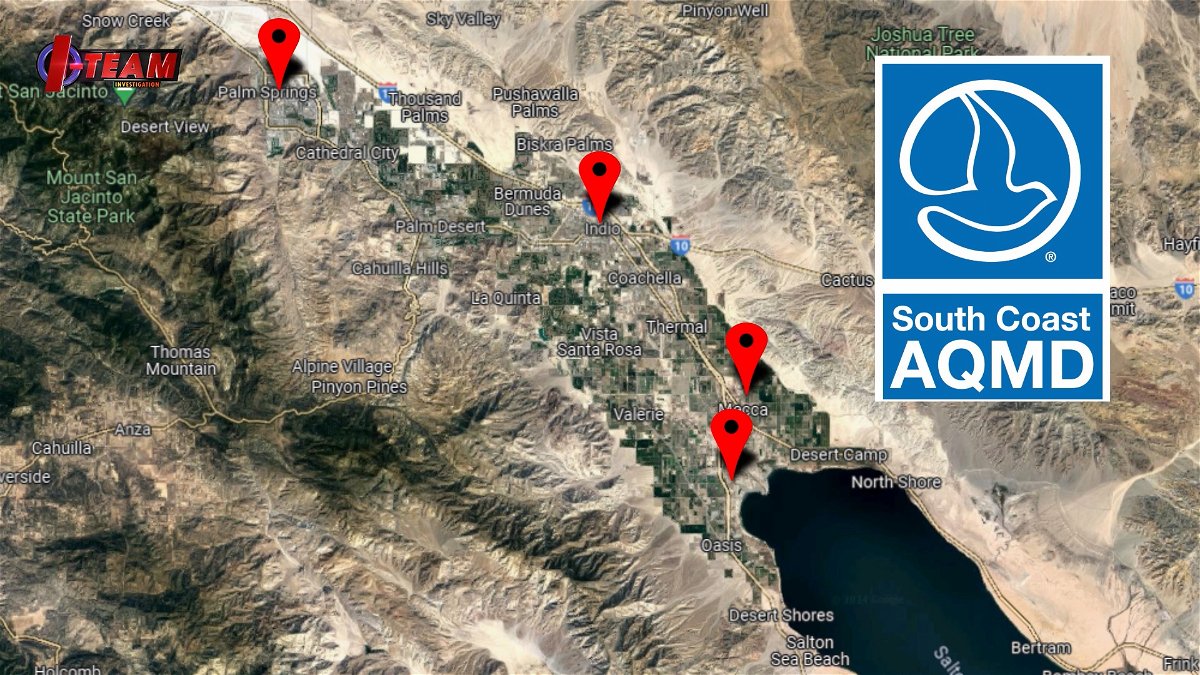
More air monitors are also being installed to increase the data points so it's easier to identify pollution-troubled days and areas around the desert. The South Coast Air Quality Management District says it is now operating monitoring sites in Mecca at Saul Martinez Elementary School, in Palm Springs at Palm Springs Fire Department #3 off East Racquet Club Road, in Indio at Amistad High School off Golf Center Parkway, and on the Torrez-Martinez Tribal Land at Lincoln Avenue and 73rd Avenue in Mecca.
Officials also recently discussed the need for more focused alerts, for example, canceling school athletics on high dust days to protect young athletes and their lungs from breathing in dust with damaging PM10 dust particles.
Jeff Stahl asked Perez about what needs to be done and what's being done right now?" Perez said, "Obviously the data is going to be helpful. We need the data to help support us."
Fourth District Riverside County Supervisor Manuel Perez says he's working with the SCAQMD on installing new air quality monitoring sites around the valley and is looking toward environmental justice initiatives to pay for more resources and staffing.
Street sweepers are also a big tool for removing dust particles from our roadways. That's been the primary valley-wide clean-air strategy for years now and has shown results in lowering the number of non-compliance days in meeting federal clean-air standards.
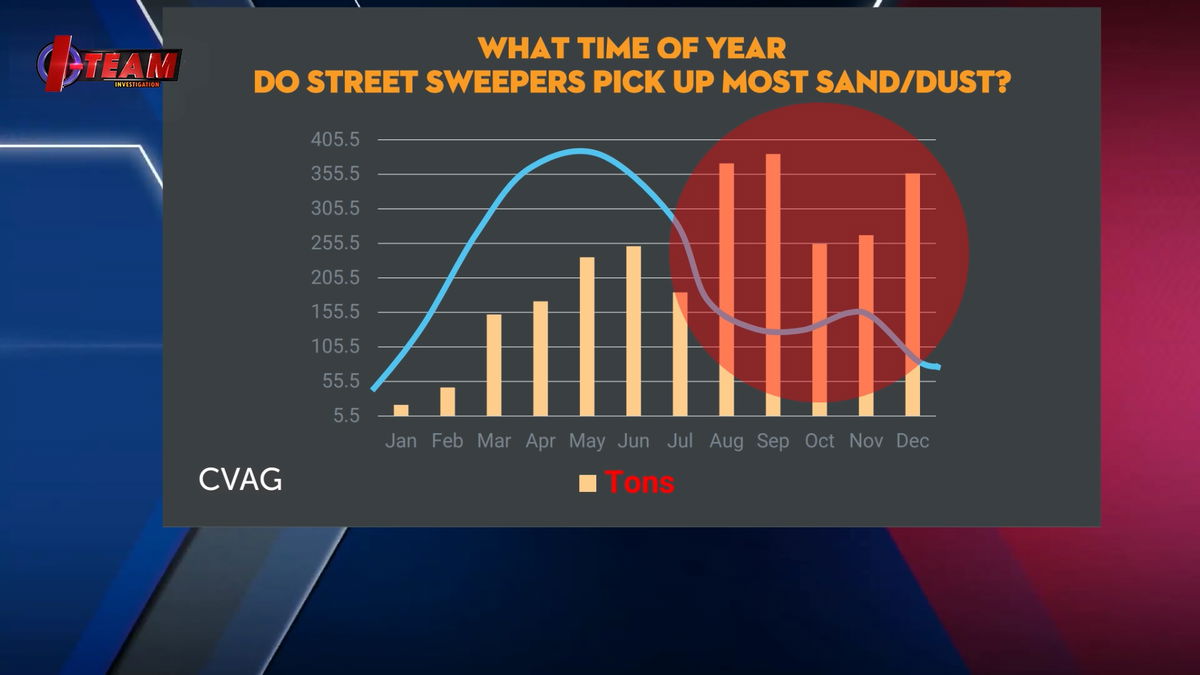
This chart shows how sweepers have collected two to four times the normal amount of sand and grit from our streets since Hilary in August, even though those months are not in our traditional windy season.
"You know, and if we have light rains periodically that would be good," Nelson said to Jeff Stahl.
She's optimistic our air will return to more normal conditions if we get light rains, our desert sands crust over as they usually do, and new vegetation naturally stabilizes the loose silt.
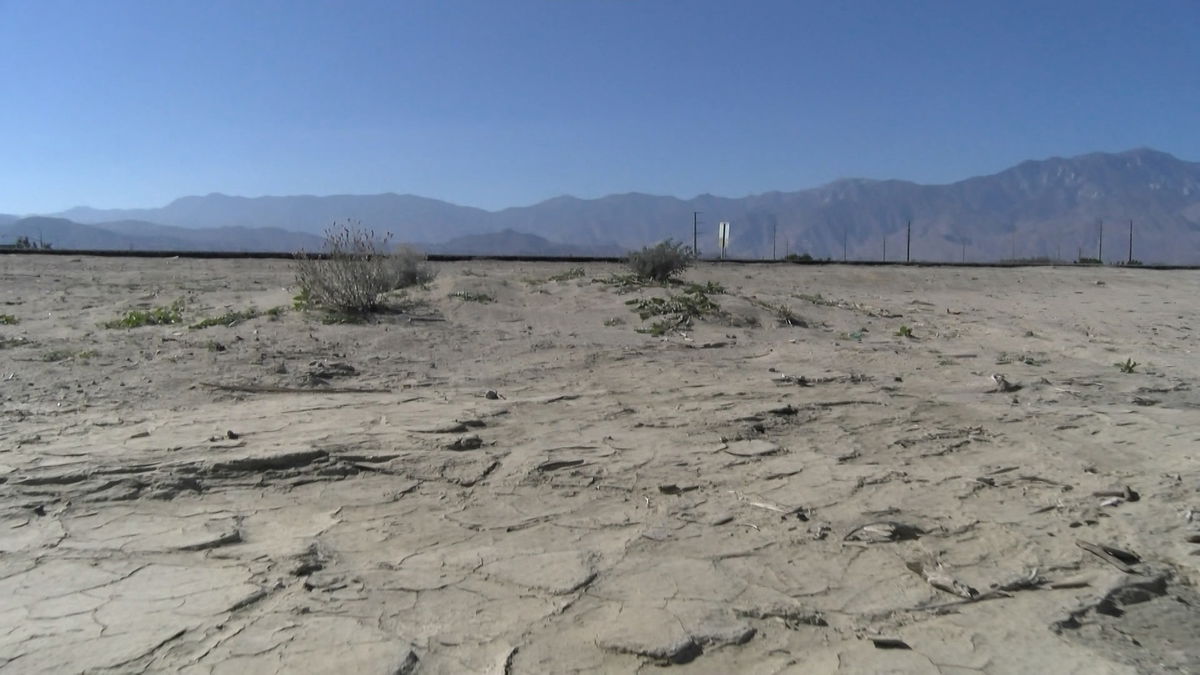
Here's what you can do to protect your health. Change your HVAC air conditioner filters regularly, use a high-efficiency HEPA filter in your home, and regularly vacuum up allergens, pollens, pet dander, and other irritants in your home. Dr. Devlin also recommends seeing your primary physician or an allergist or pulmonologist to see how you can improve your respiratory health.
See Jeff Stahl's latest I-Team investigation Hazardous Haze Tonight at 6:00 p.m. on KESQ News Channel 3 with additional information and coverage starting at 4:00 p.m.

